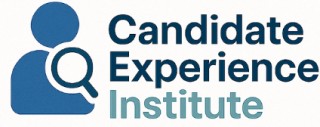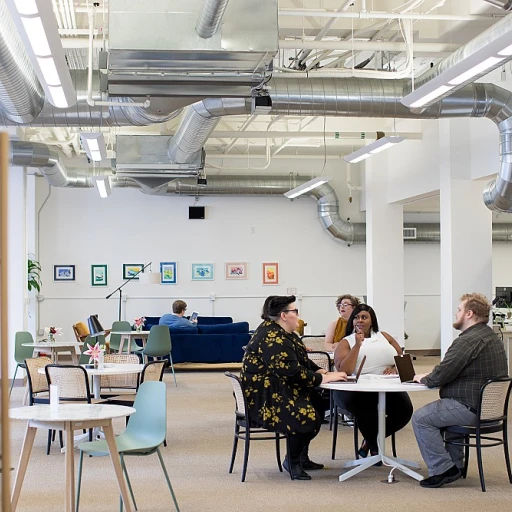
Understanding Talent Assessments
The Importance of Talent Assessments in Hiring
In today's competitive job market, organizations are constantly seeking effective tools to enhance their hiring processes. Talent assessments have emerged as a key component in evaluating a candidate’s potential and fit for a role. These assessments provide valuable insights into a candidate's skills, abilities, and personality traits.
Talent assessments employ various methods, including cognitive ability tests, personality assessments, and work samples. Each of these plays a crucial role in understanding the capabilities and behavior patterns of candidates. For instance, cognitive ability tests evaluate problem-solving skills and potential to handle job-specific challenges. Personality tests, on the other hand, shed light on behavioral traits that align with organizational culture and leadership development demands.
Organizations benefit greatly from incorporating job simulations and work samples into their assessment process. These creative methods allow candidates to demonstrate their skills in a controlled environment, offering real-world insights into their performance potential. As a result, organizations can make informed decisions about hiring, succession planning, and talent management.
The Role of Talent Assessments in Candidate Experience
Impact of Talent Assessments on the Recruitment Journey
The incorporation of talent assessments in the hiring process has a profound impact on the overall candidate experience. When organizations leverage a variety of assessment tools to gauge candidates' abilities, personality traits, and potential, they effectively streamline the process, enhancing both efficiency and experience.
By integrating these tools, such as cognitive ability and personality tests, organizations gain valuable insights into candidates' skills and behavioral traits. This practice not only aids in identifying the best fit for the job but also plays a critical role in succession planning and leadership development. Candidates who undergo these assessments tend to appreciate the structured approach, as it provides them with clarity on how their abilities align with the organizational needs.
The use of assessments in the hiring process allows organizations to see beyond traditional metrics, such as resumes and interviews. By evaluating work samples or leveraging job simulations, hiring teams can gather a comprehensive picture of candidates' job-specific skills and potential performance. This is particularly beneficial in identifying individuals who possess the cognitive and personal capabilities required for both current roles and future challenges.
However, the deployment of these assessment methods should be carefully managed to ensure they do not detract from the human element of the recruitment journey. Balancing automated assessment tools with personal interactions is essential in preserving the warmth and empathy that candidates value. Personal touchpoints in the hiring processes help in maintaining a connection, ensuring candidates do not feel reduced to mere data points.
Ultimately, by successfully leveraging talent assessments, organizations can elevate their recruitment strategy. This not only enhances the candidate experience but also supports better talent management practices. Candidates who feel respected and accurately assessed are more likely to view the organization positively, regardless of whether they are hired, fostering a lasting connection.
For a deeper dive into these dynamics, the importance of designing fair assessments, and their role in improving candidate experience, you may explore our insights on the extended candidate journey.
Designing Fair and Inclusive Assessments
Crafting Fair and Equitable Assessment Strategies
Designing assessments that are both fair and inclusive is crucial to ensuring a positive candidate experience. The use of diverse assessment methods helps organizations gather comprehensive insights into a candidate’s potential. By incorporating a range of tools like cognitive ability tests, personality assessments, and job simulations, companies can better understand a candidate's range of skills and abilities.
It's essential for organizations to recognize the role of assessment in forecasting performance and identifying future leadership. These insights pave the way for a more streamlined hiring process. However, ensuring that these assessments are free from bias is critical. One effective approach is to employ job-specific tests that focus on actual work samples, reducing the influence of unrelated personality traits.
The implementation of diverse and equitable talent assessment tools also supports succession planning. By evaluating behavioral traits and potential growth areas, employers can make more informed decisions on leadership development. These methods, by being fair and inclusive, not only enhance the selection process but significantly improve candidate satisfaction, making them feel valued and understood during the hiring processes.
For organizations keen on bridging talent gaps and optimizing their approach, navigating this balance thoughtfully can lead to a more engaging candidate experience, aligning with their overarching talent management goals.
Balancing Automation and Human Touch
Achieving Harmony Between Technology and Personal Interaction
In the context of facilitating a rich candidate experience during the hiring process, the balance between technology-driven automation and the irreplaceable human touch remains a significant focal point. Organizations adopting talent assessment tools stand to gain insightful data on candidates’ skills, cognitive ability, personality traits, and behavioral patterns. This data aids in identifying potential, ensuring a better match for job-specific roles. While automation allows for efficiency in processing large volumes of candidate data, cutting down processing time, and ensuring consistency in assessment methods, it's essential to maintain personal interactions throughout the evaluation process. Personal engagement helps in understanding a candidate beyond the quantitative metrics generated by ability tests or personality assessments. It provides insights into candidates' motivations and long-term aspirations, which can be instrumental in leadership development and succession planning initiatives. The nuance of human interaction becomes particularly crucial when dealing with aspects that automated tools might overlook, such as cultural fit or the subtlety in behavioral traits. Practices such as conducting interviews following initial automated screening tests or integrating job simulations and work samples as part of the assessment process can help in painting a holistic picture of a candidate’s potential. Furthermore, ensuring a seamless experience necessitates regular communication, providing support and guidance throughout the various stages of assessments. Candidates should feel valued and seen, not only as parts of a mechanized hiring process but as individuals whose experiences are respected and considered. By effectively balancing technology with human interaction, organizations can enhance fairness and inclusivity within the talent assessment framework, ensuring candidates experience a transparent and supportive recruitment journey. This strategy, in turn, reflects positively on the organization’s commitment to fostering a positive candidate experience, ultimately enhancing its reputation in the competitive job market.Feedback and Continuous Improvement
Feedback Mechanisms and Iterative Growth
Elevating the candidate experience involves a commitment to feedback, which can be a game-changer in refining talent assessments and the broader hiring processes. Gathering insights from candidates can highlight aspects of the assessment tools and methods that might need adjustment. By actively seeking and valuing this feedback, organizations illustrate their dedication to continuous improvement, which positively impacts the candidate experience. Employers should consider leveraging both automated tools and direct communication channels to collect candidate feedback regarding their assessment experience. This data can reveal critical insights into the effectiveness of job simulations, work samples, and ability tests. Additionally, these insights help in identifying any biases or obstacles within the process, paving the way for fairer and more inclusive hiring practices. Moreover, integrating feedback loops not only aids in enhancing the current assessment process but also informs long-term talent management strategies, such as succession planning and leadership development. Regular assessment of the feedback collected enables organizations to fine-tune their tools and methods, ensuring that they align perfectly with job-specific requirements and contribute to a positive hiring journey. In summary, prioritizing feedback and fostering a culture of iterative growth helps organizations keep their candidate assessment processes agile and efficient, resulting in better alignment with potential hires and a more satisfying candidate experience overall.Case Studies and Best Practices
Real-Life Examples of Successful Talent Assessments
Organizations across various sectors have started to refine their talent assessment strategies significantly, focusing on enhancing the candidate experience. These strategies encompass embracing fair and inclusive assessments while balancing automated tools and human interaction. Here are some notable real-life examples that highlight the positive impact of well-executed assessments on both organizations and candidates:- Technology Company Evolution: One leading technology company introduced cognitive ability tests combined with job-specific tasks to better gauge candidates' potential. By focusing on relevant skills and reducing bias through structured assessments, they managed to significantly improve their hiring process. This approach not only helped identify top talent but also fostered candidates' confidence in the fairness of the assessments.
- Retail Giant's Behavioral Insights: A well-known retail giant enhanced their hiring process by integrating personality assessments and behavioral traits evaluations. These insights allowed the organization to align candidates' abilities and personality traits with the company's leadership development goals, ultimately aiding in succession planning. Candidates, in turn, appreciated the transparency and predictive power of these assessments as part of a supportive candidate experience.
- Finance Sector's Automated Tools: A prominent financial services organization employed a combination of automated assessment tools and personalized feedback mechanisms. By implementing personality tests and work sample assessments alongside traditional interviews, they carefully balanced automation with a human touch. This approach facilitated a thorough evaluation of candidates’ abilities while fostering a personalized candidate experience.













